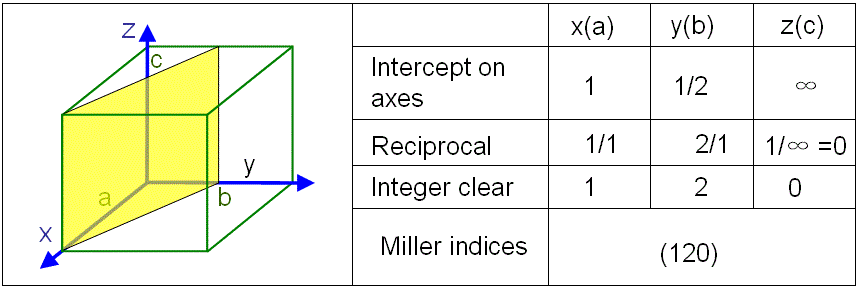=================================================================================
Simply speaking, the process of indexing electron diffraction patterns of a single crystal is to label the individual diffraction spots with their proper values and sign (+ or -) of h, k, and l.
In general, indexing electron diffraction patterns is an empirical work with theoretical understandings. We can perform indexing electron diffraction patterns in various ways, depending on how much information we already know about the specimen. Experienced microscopists can take shortcuts because they remember some obvious symmetries, such as a square or hexagonal array of spots for a cubic crystal. Therefore, they can recognize a zone axis from the symmetry of the pattern and thus easily identify many patterns just by looking at them. However, they still need to manually index new patterns or to identify unfamiliar ones.
Figure 4825 shows an example of indexing a cubic crystal plane.

Figure 4825. Steps of indexing a cubic crystal plane.
When we are indexing a diffraction pattern, we must eliminate certain diffraction spots based on structure factor rules. Table 4825 lists some very useful information for indexing. It is common that we take a copy of standard diffraction patterns with us or look at the patterns online when we are operating the microscope.
Table 4825. Useful materials and databases for indexing electron diffraction patterns.
| |
Links |
Allowed and forbidden reflections |
page3897 |
Standard indexed electron diffraction patterns |
Link |
Indexing of crystal structures can be done by analyzing diffraction patterns. The interpretation of diffraction patterns obtained from two-dimensional and quasi-3D systems can be very time-consuming work at different investigation levels. The simplest case includes calculating the characteristic distances in different crystallographic
directions using Bragg’s equation, and comparing the obtained values
to the database of the parameters of known crystallographic lattices. The
lattice parameters of elementary unit cells for particular crystallographic lattices can be
also found.
Depending on the available information of the crystal, there are various methods to index electron diffraction patterns, however, all those methods include the following basic steps:
i) Identify the transmitted electron beam, or called (000) forward diffraction in the diffraction pattern, which is normally the brightest spot in the center of the diffraction pattern.
ii) Identify the normal (zone axis) to the plane of the diffraction pattern, which is the (000) forward diffraction beam.
iii) Index two independent (not co-linear) diffraction spots nearest the (000) spot.
iv) Obtain indices of all other diffraction spots in the diffraction pattern with linear combinations of the two independent diffraction spots.
It is important to know that, in the indexing process, most of the work includes measuring and verifying the angles and distances between diffraction spots.
The procedures for indexing low zone axes of simple crystal structures are straightforward, but become significantly difficult for crystal structures with low symmetries and for high zone axes, in which many different combinations of interplanary spacings and angles presents similar diffraction patterns. In these cases, computer programs facilitate to index such diffraction patterns.
Unlike diffraction patterns which blink on and off, the Kikuchi line patterns rotate when the crystal is tilted. Therefore, tilting TEM sample along Kikuchi lines is a convenient way to orientate a crystal to certain zone axis.
In the computer age, it is quite usual to use computer control to index diffraction patterns. However, the software users still need to understand the principles related to indexing as the computer can give us wrong output.
|